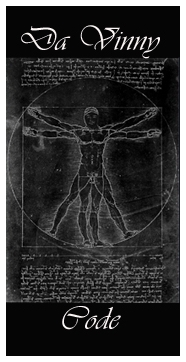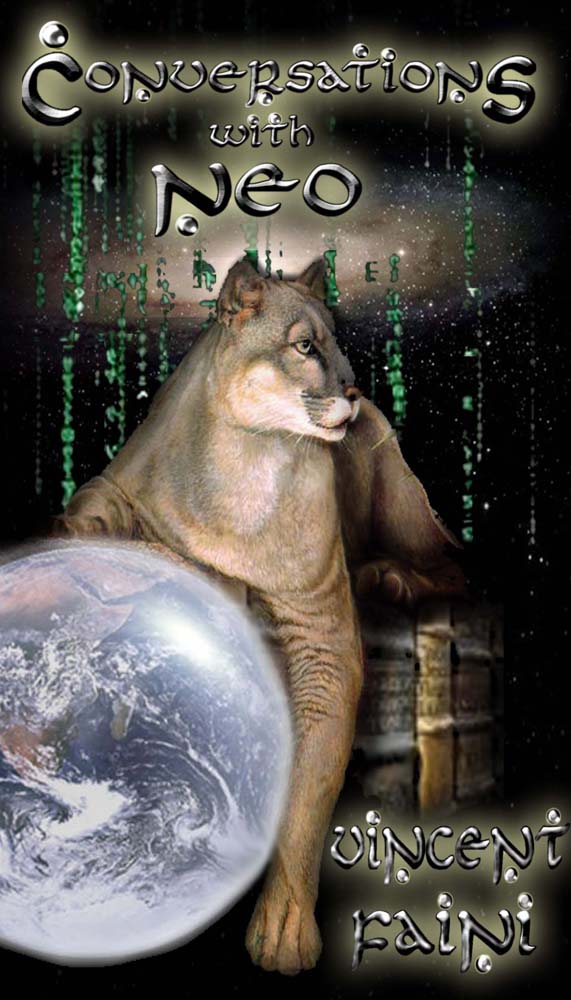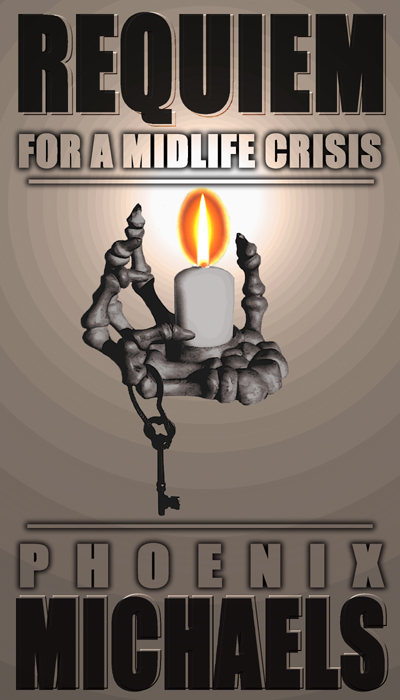Notes
-
Milgram, Stanley (1963). "Behavioral Study of Obedience". Journal of Abnormal and Social Psychology 67: 371–378. PMID 14049516. Full-text PDF.
-
Milgram, Stanley. (1974), Obedience to Authority; An Experimental View. Harpercollins (ISBN 0-06-131983-X).
-
Milgram (1974). p. ?
-
Milgram, Stanley. (1974), "The Perils of Obedience". Harper's Magazine. Abridged and adapted from Obedience to Authority.
-
Blass, Thomas. "The Milgram paradigm after 35 years: Some things we now know about obedience to authority", Journal of Applied Social Psychology, 1999, 25, pp. 955-978.
-
Blass, Thomas. (2002), "The Man Who Shocked the World", Psychology Today, 35:(2), Mar/Apr 2002.
-
Milgram films. Accessed 4 October 2006.
-
See Milgram (1974), p. 195
-
Dimow, Joseph. "Resisting Authority: A Personal Account of the Milgram Obedience Experiments", Jewish Currents, January 2004.
-
Peters, Thomas, J.,, Waterman, Robert. H., "In Search of Excellence", 1981. Cf. p.78 and onward.
-
Milgram, old answers. Accessed 4 October 2006.
-
www.plosone.org/article/fetchArticle.action?articleURI=info%3Adoi%2F10.1371%2Fjournal.pone.0000039. Retrieved on 2007-03-20.
-
Wolfson,``n`n` ` `` ` xb b` zj` b Andrew. A hoax most cruel. The Courier-Journal. October 9, 2005.
-
Jury finds Stewart not guilty in McDonald's hoax case. The Courier-Journal. October 31, 2006.
-
The Tenth Level at the Internet Movie Database. Accessed 4 October 2006.
-
I as in Icarus at the Internet Movie Database. Accessed 4 October 2006.
-
The Human Behavior Experiments at IMDb.com. Accessed 4 October 2006.
-
The Science of Evil (HTML). Retrieved on 2007-01-04.
References
-
Blass, Thomas. (2004), The Man Who Shocked the World: The Life and Legacy of Stanley Milgram. Basic Books (ISBN 0-7382-0399-8).
-
Levine, Robert V. "Milgram's Progress". American Scientist. July-August, 2004.
-
Book review of "The Man Who Shocked the World: The Life and Legacy of Stanley Milgram". Thomas Blass. xxiv + 360 pp. Basic Books, 2004.
-
-
Miller, Arthur G., (1986). "The obedience experiments: A case study of controversy in social science". New York : Praeger.
-
Parker, Ian, "Obedience". Granta. Issue 71, Autumn 2000.
-
Includes an interview with one of Milgram's volunteers, and discusses modern interest in, and scepticism about, the experiment.
-
-
Tarnow, Eugen, "Towards the Zero Accident Goal: Assisting the First Officer Monitor and Challenge Captain Errors". Journal of Aviation/Aerospace Education and Research, 10(1).
-
Wu, William, "Practical Psychology: Compliance: The Milgram Experiment."
-
Dreifus, Claudia (April 3, 2007). Finding Hope in Knowing the Universal Capacity for Evil. New York Times
-
What messages are behind today's cults?, APA Monitor, May 1997
-
A simple choice, The Guardian, April 19, 2005
-
Politicians' uniquely simple personalities, Nature, February 6, 1997
Film
-
Obedience, Black-and-white film of the experiment, shot by Milgram. Distributed by The Pennsylvania State University Media Services.
-
The Milgram Re-enactment, 2002. Color, Exact re-enactment of one condition of the obedience experiment. Created by conceptual UK artist Rod Dickinson.
-
Atrocity, 2005. Award-winning short film re-enacting the experiment.
Reference List on Evil
Collected by Phil Zimbardo and Kieran O’Connor
Adams, G. B., & Balfour, D. L. (2004). Unmasking Administrative Evil (Revised Edition ed.). Armonk, New York: M.E. Sharpe.
Ahern, M. B. (2003). The Problem of Evil. New York: Routledge.
Alighieri, D. (2006). The Inferno (J. Ciardi, Trans.). New York: Signet Classics.
Allen, J. (2000). Without Sanctuary: Lynching Photography in America. Santa Fe, NM: Twin Palms.
Anders, T. (1994). The Evolution of Evil: An Inquiry Into the Ultimate Origins of Human Suffering. Chicago: Open Court.
Aquinas, St. T. (2003). On Evil (R. Regan, Trans.). New York: Oxford University Press.
Archer, D., & Gartner, R. (1987). Violence and Crime in Cross-National Perspective. New Haven, CT: Yale University Press.
Arendt, H. (2006). Eichmann in Jerusalem: A Report on the Banality of Evil. New York: Penguin Books.
Aronson, E. (2003). The Social Animal (9th ed.). New York: W.H. Freeman.
Aronson, E. (2000). Nobody Left to Hate: Teaching Compassion After Columbine. New York: Worth Publishers.
Bailie, G. (1995). Violence Unveiled: Humanity at the Crossroads. New York: Crossroad.
Bartlett, S. J. (2005). The Pathology of Man: A Study of Human Evil. Springfield, IL: C.C. Thomas.
Baudrillard, J. (1993/2002). The Transparency of Evil: Essays on Extreme Phenomena (J. Baenedict, Trans.). New York: Verso.
Baumeister, R. (1997). Evil: Inside Human Violence and Cruelty. New York: W.H. Freeman.
Becker, E. (1985). Escape from Evil. New York: Free Press.
Bettelheim, B. (1979). Surviving, and Other Essays. New York: Vintage Books.
Bing, L. (1991). Do or Die. New York: Harper Collins.
Blumenthal, D. R. (1999). The Banality of Good and Evil: Moral Lessons from the Shoah and Jewish Tradition. Washington, D.C.: Georgetown University Press.
Browning, C. R. (1992). Ordinary Men: Reserve Police Battalion 101 and the Final Solution in Poland. New York: Harper Collins.
Broz, S. (2004). Good People in an Evil Time: Portraits of Complicity and Resistance in the Bosnian War (E. Elias-Bursac, Trans.). New York: Other Press.
Brunstein, W. (1996). The Logic of Evil: The Social Origins of the Nazi Party, 1925-1933. New Haven, CT: Yale University Press.
Camus, A. (1991). The Plague (S. Gilbert, Trans.). New York: Vintage Books.
Canada, G. (1995). Fist, Stick, Knife, Gun: A Personal History of Violence in America. Boston: Beacon Press.
Cenkner, W. (Ed.) (1997). Evil and the Response of World Religion. St. Paul, MN: Paragon House.
Charny, I. (1982). How Can We Commit the Unthinkable?: Genocide, the Human Cancer. Boulder, CO: Westview Press.
Cicero, M. T. (1991). On Stoic Good and Evil (M. R. Wright, Trans.). Warminster, England: Aris and Phillips.
Conrad, J. (2000). Heart of Darkness. Orchard Park, New York: Penguin Books.
Conroy, J. (2001). Unspeakable Acts, Ordinary People: The Dynamics of Torture. Berkeley: University of California Press.
Costanzo, M., & Oskamp, S. (1994). Violence and the Law. Thousand Oaks, CA: Sage Publications.
Dallaire, R. (2004). Shake Hands with the Devil: The Failure of Humanity in Rwanda. New York: Carroll & Graf.
de Alba, J. (1969). Violence in America: De Tocqueville's America Revisited. Washington, D.C.: Acropolis Books.
Dilman, I. (2005). The Self, the Soul, and the Psychology of Good and Evil. New York: Routledge.
Dimsdale, J. E. (1980). Survivors, Victims, and Perpetrators: Essays on the Nazi Holocaust. Washington, D.C.: Hemisphere Pub. Corp.
Dostoyevsky, F. (2007). Crime and Punishment. New York: Penguin Books.
Dostoyevsky, F. (2002). The Brothers Karamazov (L. Volokhonsky, Trans.). New York: Farrar, Straus, Giroux.
Dow, M. (2004). American Gulag: Inside U.S. Immigration Prisons. Berkeley, CA: University of California Press.
Dray, P. (2003). At the Hands of Persons Unknown: The Lynching of Black America. New York: Modern Library.
Evans, G. R. (1990). Augustine on Evil. New York: Cambridge University Press.
Feitlowitz, M. (1998). A Lexicon of Terror: Argentina and the Legacies of Torture. New York: Oxford University Press.
Foucault, M. (1995). Discipline and Punish: The Birth of the Prison (A. Sheridan, Trans.). New York: Vintage Books.
Frankfurter, D. (2006). Evil Incarnate: Rumors of Demonic Conspiracy and Ritual Abuse in History. Princeton, NJ: Princeton University Press.
Friedman, L. M. (1993). Crime and Punishment in American History. New York: Basic Books.
Gerzon, M. (1992). A Choice of Heroes: The Changing Faces of American Manhood. Boston: Houghton Mifflin.
Ginzburg, R. (1996). 100 Years of Lynchings. Baltimore, MD: Black Classic Press.
Goethe, J. W. v. (2001). Faust (W. Arndt, Trans. Norton Critical Edition, 2nd Edition). New York: W.W. Norton.
Golding, W. (1999). Lord of the Flies. New York: Penguin Books.
Gourevitch, P. (1998). We Wish to Inform You that Tomorrow We Will Be Killed with Our Families: Stories from Rwanda. New York: Picador/ Farrar, Straus, Giroux.
Greenberg, K., & Dratel, J. L. (Eds.) (2005). The Torture Papers: The Road to Abu Ghraib. New York: Cambridge University Press.
Grossman, D. (1996). On Killing: The Psychological Cost of Learning to Kill in War and Society. Boston: Back Bay Books.
Guinness, O. (2005). Unspeakable: Facing Up to Evil in an Age of Genocide and Terror. San Francisco: Harper.
Hart, W. (2004). Evil: A Primer: A History of a Bad Idea from Beelzebub to Bin Laden. New York: Thomas Dunne Books.
Hatzfeld, J. (2005). Machete Season: The Killers in Rwanda Speak (L. Coverdale, Trans.). New York: Picador.
Hersh, S. M. (1972). Cover-up: The Army's Secret Investigation of the Massacre at My Lai 4.New York: Random House.
Hibbert, C. (2003). The Roots of Evil: A Social History of Crime and Punishment. Gloucestershire, U.K.: Sutton Publishing.
Hilberg, R. (1992). Perpetrators, Victims, Bystanders: The Jewish Catastrophe. New York: Random House.
Hogg, J. (1999). The Private Memoirs and Confessions of a Justified Sinner (Oxford World's Classics ed.). New York: Oxford University Press.
Huesmann, L. R. (2006). Aggressive Behavior: Current Perspectives. New York: Springer.
Huggins, M. K. (1991). Vigilantism and the State in Modern Latin America: Essays on Extralegal Violence. New York: Praeger Publishers.
Huggins, M. K., Haritos-Fatouros, M., & Zimbardo, P. G. (2002). Violence Workers: Police Torturers and Murderers Reconstruct Brazilian Atrocities. Berkeley, CA: University of California Press.
Hughes-Hallett, L. (2004). Heroes: A History of Hero Worship. New York: Anchor.
Innes, B. (1998). The History of Torture. New York: St. Martin's Press.
Kadish, M. R., & Kadish, S.H. (1973). Discretion to Disobey: A Study of Lawful Departures from Legal Rules. Stanford, CA: Stanford University Press.
Kagan, D. (1995). On the Origins of War and the Preservation of Peace. New York: Anchor.
Keen, S. (1991). Faces of the Enemy: Reflections of the Hostile Imagination. San Francisco: Harper Collins.
Kekes, J. (1993). Facing Evil. Princeton, NJ: Princeton University Press.
Kekes, J. (2007). The Roots of Evil. Ithaca, New York: Cornell University Press.
Kellaway, J. (2002). The History of Torture and Execution. New York: Lyons Press.
Kelly, H. A. (2006). Satan: A Biography. New York: Cambridge University Press.
Kelman, H. C., & Hamilton, V. L. (1960). Crimes of Obedience: Toward a Social Psychology of Authority and Responsibility. New Haven, CT: Yale University Press.
Kerrigan, M. (2001). Instruments of Torture: A History. New York: Lyons Press.
Kleiman, M. (1993). Against Excess: Drug Policy for Results. New York: Basic Books.
Koehn, D. (2005). The Nature of Evil. New York: Palgrave Macmillan.
Kogon, E., Langbein, H., & Ruckerl, A. (1994). Nazi Mass Murder: A Documentary History of the Use of Poison Gas (C. Lloyd-Morris, & S. Mary, Trans.). New Haven, CT: Yale University Press.
Konecni, V. J., & Ebbesen, E. B. (1982). The Criminal Justice System: A Social-Psychological Analysis. San Francisco: Freeman.
Korczak, J. (2003). Ghetto Diary. New Haven, CT: Yale University Press.
Kozol, J. (1985). Death at an Early Age: The Destruction of the Hearts and Minds of Negro Children in the Boston Public Schools. New York: Plume.
Le Bon, G. (1960). The Crowd: A Study of the Popular Mind. New York: Waking Lion Press.
Lemert, E. M. (1997). The Trouble with Evil: Social Control at the Edge of Morality. Albany, NY: State University of New York Press.
Levi, P. (1995). Survival in Auschwitz: The Nazi Assault on Humanity (S. Woolf, Trans.). Parsippany, NJ: Touchstone.
Lewis, C. S. (2001). The Screwtape Letters. San Francisco: Harper Collins.
Lifton, R. J. (2000). The Nazi Doctors: Medical Killing and the Psychology of Genocide. New York: Basic Books.
Lifton, R. J. (1990). The Genocidal Mentality: Nazi Holocaust and Nuclear Threat. New York: Basic Books.
Lipman-Blumen, J. (2005). The Allure of Toxic Leaders: Why We Follow Destructive Bosses and Corrupt Politicians--and How We Can Survive Them. New York: Oxford University Press.
McCoy, A. W. (2006). A Question of Torture: CIA Interrogation, from the Cold War to the War on Terror. New York: Owl Books/Henry Holt and Co.
McCrensky, J. (2002). Understanding Evil (Paperback ed.). New York: Marketshare.
Melville, H. (2007). Moby Dick. New York: Penguin Books.
Midgley, M. (2001). Wickedness: A Philosophical Essay. New York: Routledge.
Miles, S. H. (2006). Oath Betrayed: Torture, Medical Complicity, and the War on Terror. New York: Random House.
Miller, A. G. (2004). The Social Psychology of Good and Evil. New York: Guilford Press.
Millet, K. (1994). The Politics of Cruelty: An Essay on the Literature of Political Imprisonment. New York: W.W. Norton & Company.
Morris, N. (1977). The Future of Imprisonment. Chicago: University of Chicago Press.
Morrow, L. (2003). Evil: An Investigation. New York: Basic Books.
Morton, A. (2004). On Evil: Thinking in Action. New York: Routledge.
Neiman, S. (2004). Evil in Modern Thought: An Alternative History of Philosophy. Princeton, NJ: Princeton University, Press.
Nisbett, R., & Cohen, D. (1996). Culture of Honor: The Psychology of Violence in the South. Boulder, CO: Westview Press.
Noddings, N. (1991). Women and Evil. Berkeley: University of California Press.
O'Connor, F. (2006). A Good Man is Hard to Find and Other Stories. Fort Worth, TX: Harcourt College Publishers.
Oppenheimer, P. (1996). Evil and the Demonic: A New Theory of Monstrous Behavior. New York: New York University Press.
Orwell, G. (1983). Nineteen Eighty-Four. New York: Plume.
Parkin, D. (1987). The Anthropology of Evil. New York: Blackwell.
Peters, E. (1996). Torture (Expanded ed.). Philadelphia: University of Pennsylvania Press.
Ramirez, J. M. (1987). Essays on Violence. Seville, Spain: Universidad de Sevilla.
Ratner, M., & Ray, E. (2004). Guantanamo: What the World Should Know. Gloucestershire, U.K.: Arris Books.
Rejali, D. M. (1994). Torture and Modernity: Self, Society, and State in Modern Iran. Boulder, CO: Westview Press.
Ricoeur, P. (1986). The Symbolism of Evil (E. Buchanan, Trans.). Boston: Beacon Press.
Rorty, A. O. (2001). The Many Faces of Evil: Historical Perspectives. New York: Routledge.
Rosenthal, A. L. (1987). A Good Look at Evil. Philadelphia: Temple University Press.
Saar, E., & Novak, V. (2005). Inside the Wire: A Military Intelligence Soldier's Eyewitness Account of Life at Guantanamo. New York: Penguin Press.
Sarbin, T. R. (1979). Challenges to the Criminal Justice System: The Perspectives of Community Psychology. New York: Human Sciences Press.
Scheper-Hughers, N. (1992). Death without Weeping: The Violence of Everyday Life in Brazil. Berkeley: University of California Press.
Schwarz, H. (2001). Evil: A Historical and Theological Perspective. Lima, OH: Academic Renewal Press.
Shafer-Landau, R. (2004). Whatever Happened to Good and Evil?. New York: Oxford University Press.
Shermer, M. (2004). The Science of Good and Evil: Why People Cheat, Gossip, Care, Share, and Follow the Golden Rule. New York: Owl Books/Henry Holt and Co.
Singer, P. (2004). The President of Good and Evil: Questioning the Ethics of George W. Bush. New York: Plume.
Solzhenitsyn, A. I. (2002). The Gulag Archipelago, 1918-1956: An Experiment in Literary Investigation (T. P. Whitney & H. Willetts, Trans.). New York: Harper & Row.
Staub, E. (1992). The Roots of Evil: The Origins of Genocide and Other Group Violence. New York: Cambridge University Press.
Staub, E. (2003). The Psychology of Good and Evil: Why Children, Adults, and Groups Help and Harm Others. New York: Cambridge University Press.
Stevenson, R. L., & Linehan, K. (Ed.) (2002). The Strange Case of Dr. Jekyll and Mr. Hyde (Norton Critical Edition). New York: W.W. Norton & Company.
Strasser, S. (2004). The Abu Ghraib Investigations: The Official Reports of the Independent Panel and the Pentagon on the Shocking Prisoner Abuse in Iraq. New York: Public Affairs.
Tapp, J. L., & Levine, F. J. (1977). Law, Justice, and the Individual in Society: Psychological and Legal Issues. Fort Worth, TX: Harcourt School.
Tedeschi, J. T., & Felson, R. B. (1994). Violence, Aggression, and Coercive Actions. Washington, D.C.: American Psychological Association.
Tiger, L. (1991). The Manufacture of Evil: Ethics, Evolution, and the Industrial System. London: Marion Boyars Publishers, Ltd.
Tyler, T. R. (2006). Why People Obey the Law. Princeton, N.J.: Princeton University Press.
Vietnam Veterans Against the War (1972). The Winter Soldier Investigation: An Inquiry into American War Crimes. Boston: Beacon Press.
Vonnegut, K. J. (1998). Cat's Cradle. New York: Dial Press.
Vonnegut, K. J. (1999). Slaughterhouse-Five, or, The Children's Crusade: A Duty-Dance with Death. New York: Dial Press.
Waller, J. E. (2007). Becoming Evil: How Ordinary People Commit Genocide and Mass Killing. New York: Oxford University Press.
Wiesel, E. (1995). The Town Beyond the Wall (S. Becker, Trans.). New York: Shocken.
Wiesel, E., & de Saint-Cheron, M. (2000). Evil and Exile (J. Rothschild & J. Gladding, Trans.). Notre Dame, IN: University of Notre Dame Press.
Wiesel, E. (2006). Night. New York: Hill & Wang.
Wrightsman, L. S. (2006). Psychology and the Legal System (6th ed.). Belmont, CA: Wadsworth and Thomson Learning.
Ziemer, G. A. (1972). Education for Death, the Making of the Nazi. New York: Octagon Books.
If you are interested in what I have observed for the past thirty years then CLICK HERE>
Discipline
In his epoch making book The Road Less Traveled, Scott Peck talked of the importance of discipline. He described four aspects of discipline:
-
Delaying gratification: Sacrificing present comfort for future gains.
-
Acceptance of responsibility: Accepting responsibility for one's own decisions.
-
Dedication to truth: Honesty, both in word and deed.
-
Balancing: Handling conflicting requirements. Scott Peck talks of an important skill to prioritize between different requirements -- bracketing.
-
-
'Road Less Traveled' Author Dies at 69" - obituary from the Associated Press, September 26, 2005
-
"Gin, cigarettes, women: I'm a prophet, not a saint" - interview in The Times, May 10, 2005
-
"Pop psychiatrist who ignored his bestselling advice on adultery" - obituary in The Guardian, September 25, 2005
-









